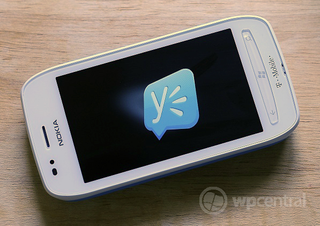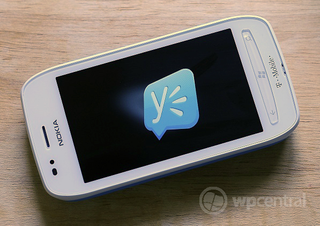Official: Microsoft buys Yammer for $1.2 billion to boost cloud services


On June 14th, rumors were circulating that Microsoft was poised to buy Yammer, a social-network and messaging service for enterprise, for at least $1 billion dollars. Speculation cooled down a bit as Microsoft intended to focus on the Surface and Windows Phone 8 announcements but a new week is upon us and so the deal is now official.
Microsoft has now purchased Yammer (www.yammer.com) for a massive $1.2 billion in cash and it will be folded into the Microsoft Office Division, led by division President Kurt DelBene. The team will continue to report to current CEO David Sacks to maintain continuity, at least for the near future.
A statement from Microsoft on the acquisition states
“The acquisition of Yammer underscores our commitment to deliver technology that businesses need and people love. Yammer adds a best-in-class enterprise social networking service to Microsoft’s growing portfolio of complementary cloud services.”
Yammer is only four years old but has nearly 5 million users including employees at 85 percent of the Fortune 500, making it an interesting and strategic purchase. So why the acquisition even though Microsoft has Lync and Sharepoint already? Mary Jo Foley (ZDNet) ruminates that Microsoft "...needed a cooler brand and wanted the cross-platform support" which sounds about right to us.
Here's to hopefully seeing Yammer built into Windows Phone 8.
Full press release after the break...
Microsoft to Acquire YammerJune 25, 2012Microsoft extends cloud services with best-in-class enterprise social networking.
REDMOND, Wash., and SAN FRANCISCO — June 25, 2012 — Microsoft Corp. and Yammer Inc. today announced that they have entered into a definitive agreement under which Microsoft will acquire Yammer, a leading provider of enterprise social networks, for $1.2 billion in cash. Yammer will join the Microsoft Office Division, led by division President Kurt DelBene, and the team will continue to report to current CEO David Sacks.
Get the Windows Central Newsletter
All the latest news, reviews, and guides for Windows and Xbox diehards.
“The acquisition of Yammer underscores our commitment to deliver technology that businesses need and people love,” said Steve Ballmer, CEO, Microsoft. “Yammer adds a best-in-class enterprise social networking service to Microsoft’s growing portfolio of complementary cloud services.”
Launched in 2008, Yammer now has more than 5 million corporate users, including employees at 85 percent of the Fortune 500. The service allows employees to join a secure, private social network for free and then makes it easy for companies to convert a grassroots movement into companywide strategic initiative.
Yammer will continue to develop its standalone service and maintain its commitment to simplicity, innovation and cross-platform experiences. Moving forward, Microsoft plans to accelerate Yammer’s adoption alongside complementary offerings from Microsoft SharePoint, Office 365, Microsoft Dynamics and Skype.
“When we started Yammer four years ago, we set out to do something big,” Sacks said. “We had a vision for how social networking could change the way we work. Joining Microsoft will accelerate that vision and give us access to the technologies, expertise and resources we’ll need to scale and innovate.”
The acquisition is subject to customary closing conditions, including regulatory approval.
About Yammer
Yammer (www.yammer.com) is a leading provider of enterprise social networks with over 5 million verified corporate users including employees of more than 85 percent of the Fortune 500. The basic version of Yammer is free, and customers can pay to upgrade their network to receive advanced administrative and security controls, integrations with enterprise applications, priority customer service and a designated customer success manager.
About Microsoft
Founded in 1975, Microsoft (Nasdaq “MSFT”) is the worldwide leader in software, services and solutions that help people and businesses realize their full potential.
Note to editors: For more information, news and perspectives from Microsoft, please visit the Microsoft News Center at https://www.windowscentral.com/e?link=https%3A%2F%2Fclick.linksynergy.com%2Fdeeplink%3Fid%3DkXQk6%252AivFEQ%26mid%3D24542%26u1%3DUUwpUdUnU11683%26murl%3Dhttp%253A%252F%252Fwww.microsoft.com%252Fnews.&token=-stg9eew Web links, telephone numbers and titles were correct at time of publication, but may have changed. For additional assistance, journalists and analysts may contact Microsoft’s Rapid Response Team or other appropriate contacts listed at https://www.windowscentral.com/e?link=https%3A%2F%2Fclick.linksynergy.com%2Fdeeplink%3Fid%3DkXQk6%252AivFEQ%26mid%3D24542%26u1%3DUUwpUdUnU11683%26murl%3Dhttp%253A%252F%252Fwww.microsoft.com%252Fnews%252Fcontactpr.mspx.&token=fX-upNAS
Forward-Looking Statements
This press release contains forward-looking statements, which are any predictions, projections or other statements about future events. Actual results may differ materially from these forward-looking statements because of a variety of risks and uncertainties about our business, which we describe in our filings with the Securities and Exchange Commission, including our Forms 10-K and 10-Q. We do not undertake any duty to update any forward-looking statement.

Daniel Rubino is the Editor-in-chief of Windows Central. He is also the head reviewer, podcast co-host, and analyst. He has been covering Microsoft since 2007, when this site was called WMExperts (and later Windows Phone Central). His interests include Windows, laptops, next-gen computing, and watches. He has been reviewing laptops since 2015 and is particularly fond of 2-in-1 convertibles, ARM processors, new form factors, and thin-and-light PCs. Before all this tech stuff, he worked on a Ph.D. in linguistics, watched people sleep (for medical purposes!), and ran the projectors at movie theaters because it was fun.
